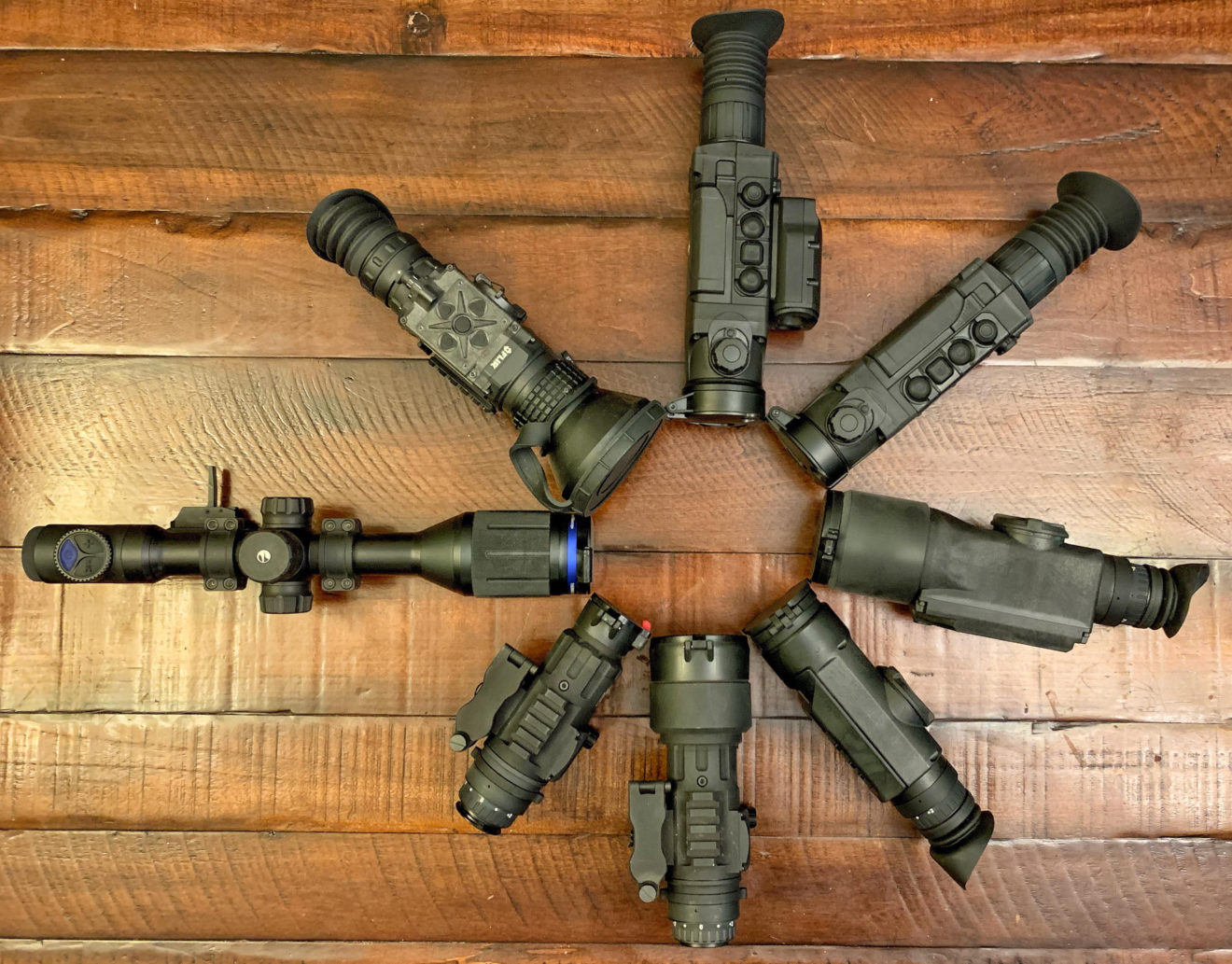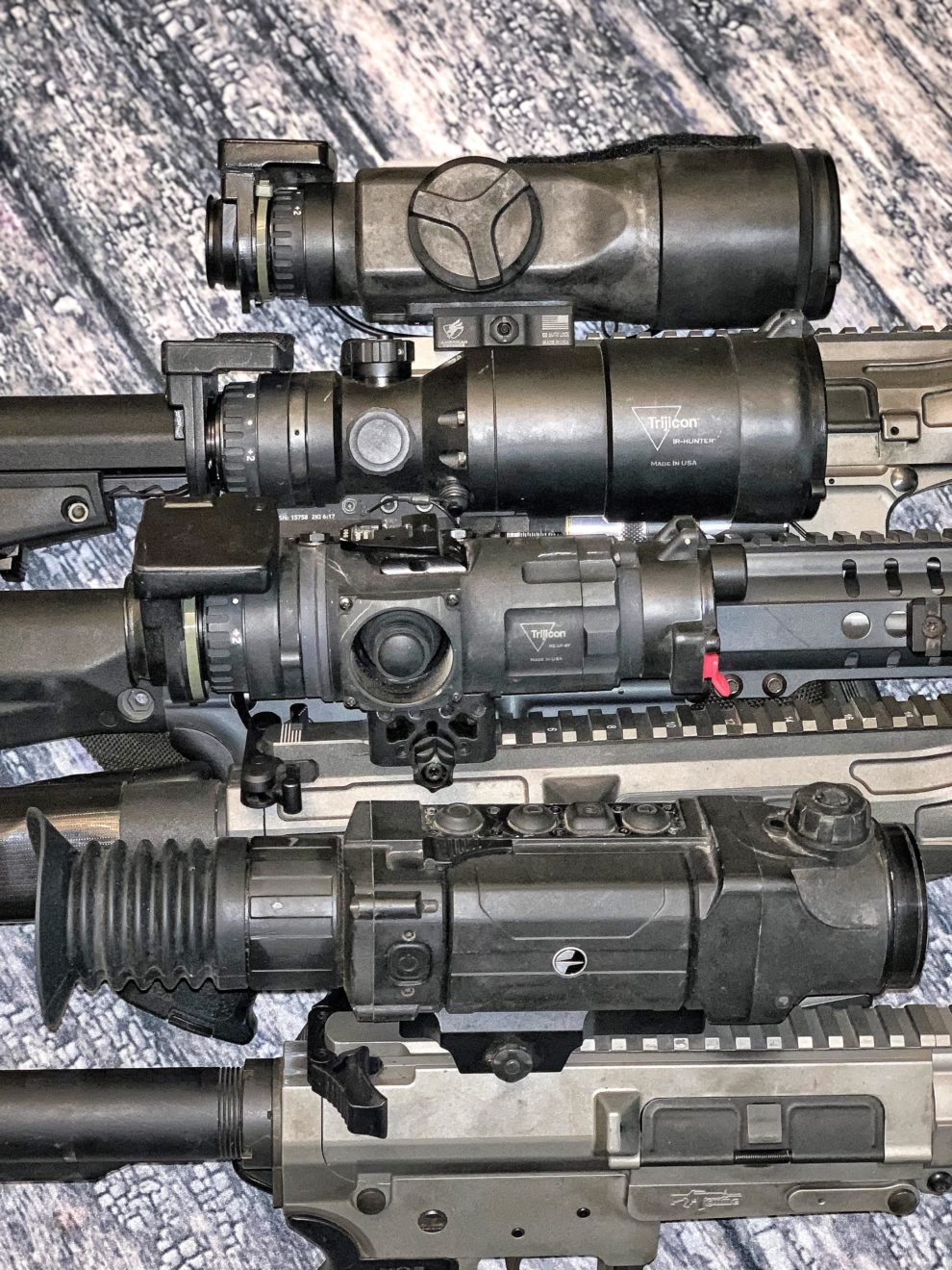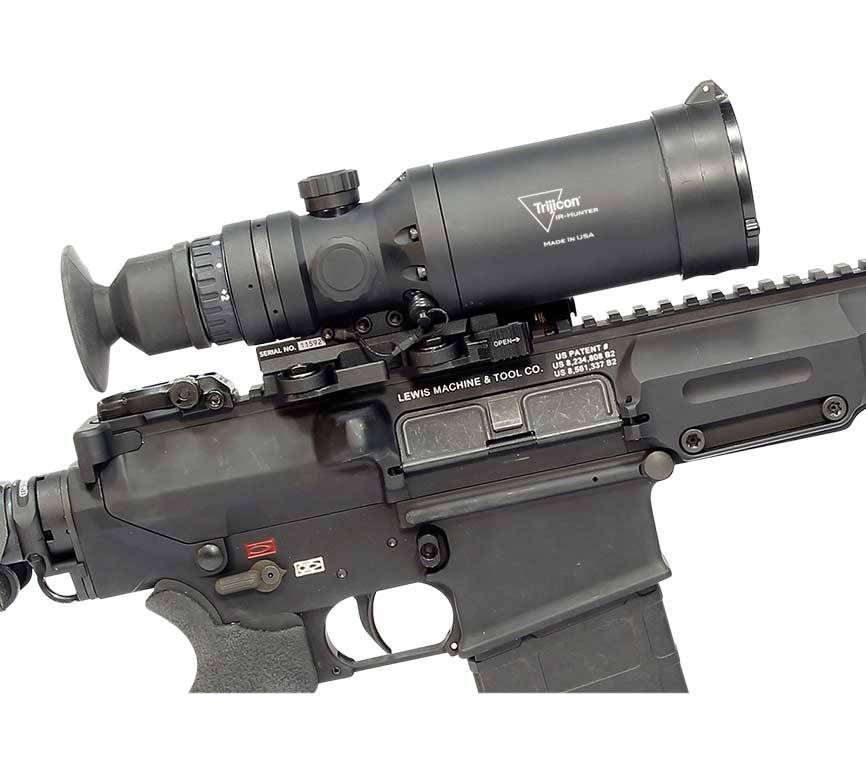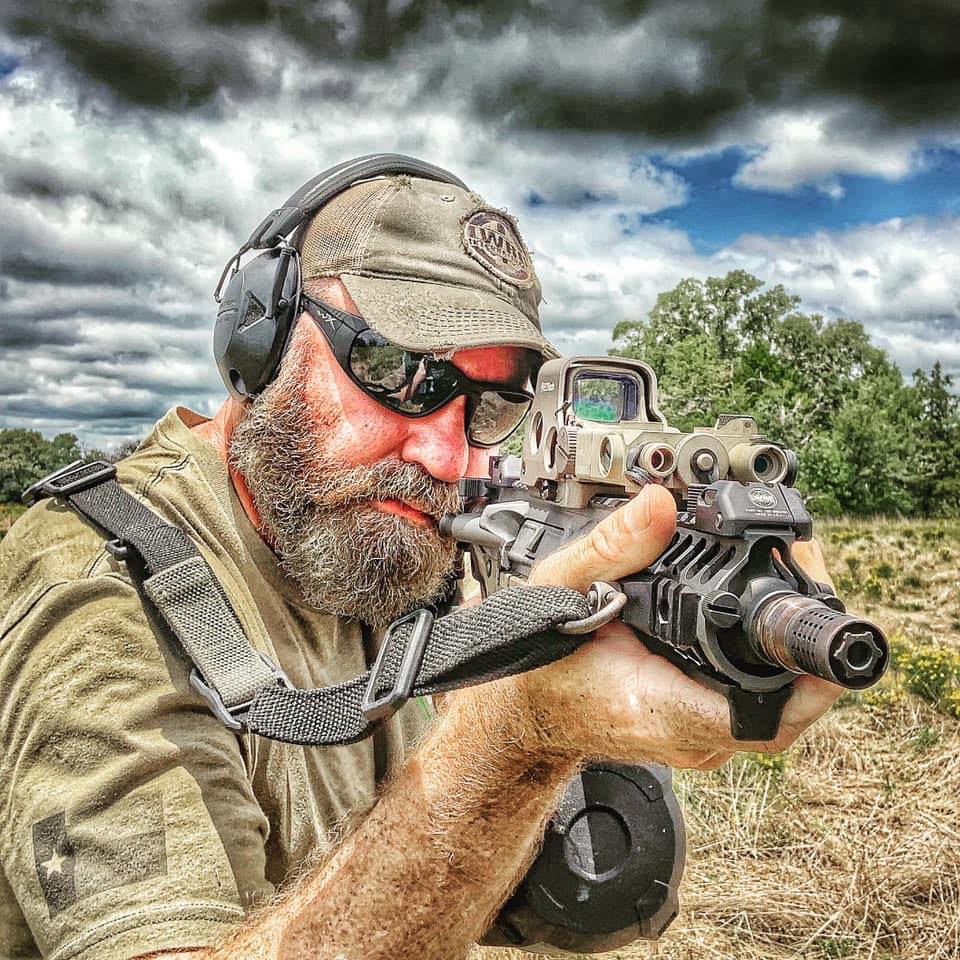Best Thermal Scopes 2019
Having tested just about every brand of thermal rifle scope available, I have assembled the best thermal scopes for 2019. These scope picks are based on my own experience hunting with the scopes, as well as the experience of hunters who have been with me and used these thermals on their own rifles.
I wrote another article discussing what to know before you buy a thermal scope. It is a great introduction to the basic terminology and what to look for in thermal scopes.
Not every scope works for every application, so if you have specific questions, feel free to reach out to me.
1. N-Vision Halo LR 50mm
My top pick is the N-Vision Halo LR 50mm. This scope works best for open to mid-cover terrain. The reason it’s in the No. 1 spot is its 50mm objective lens with the TWV640 BAE core. This 12-micron thermal camera core allows the N-Vision Halo to run a smaller objective lens at 640 x 480 resolution and have a wide field of view. In my opinion, the BAE core of the Halo LR has a 30% better image than the mid-range and low-end competition.
The second thing that makes the Halo the best thermal currently on the market is its 3.5x magnification. This amount of magnification is great for longer shots and close targets thanks to the wide field of view. At 3.5x magnification, the field of view is 9°, compared to the 7.5° field of view of the Pulsar Trail XQ 50, as an example. Because the Halo LR has a wide field of view, I can be as close as 30-40 yards and still see a large area for the running shots.
The N-Vision Halo LR does not have a lot of other gimmicks that take away from processing power. The processor is focused just on the image. The combined quality of the lens and the processor give this scope the best image on the market.
The rugged polymer housing allows the scope to take hits that metal units would not take. The housing also means it is lighter than scopes that are almost half its size.
The controls on the side are super simple and easier to use than other makes and models. I can operate this scope faster than any other thermal scope available.
It’s worth noting that the N-Vision Halo LR does not have an onboard recording. However, aftermarket accessories like the LPMR-T Thermal Video Recorder and the MDVR Mini DVR allow for recording. Both of these options have their strengths, so if you want to record through your N-Vision Halo, then get in touch with me, and I can walk you through the options.
The Halo also does not have an internal battery pack. However, you can connect an external pack to extend the run time dramatically.
You can run an Anker battery and recorder at the same time. The onboard CR123 batteries will run the scope for about 3-4 hours.
In summary, the N-Vision Halo LR has a great thermal core, excellent glass, perfect magnification range, and a wide field of view. The combination of all these pieces makes it my top pick of any thermal on the market for 2019.
2. Trijicon IR-Hunter 60mm
The Trijicon IR-Hunter 60mm is my second pick. It has the largest lens of any scope with a BAE 12-micron core. It also has the highest resolution of any scope on the civilian market. This scope is great for small targets, like coyotes, at long distances.
The Trijicon IR-Hunter also has the largest magnification, with a 36x zoom. This is the scope you want when you are shooting long distance. However, you are paying for that magnification. This is the most expensive scope on the list.
Like the N-Vision Halo LR, the Trijicon IR-Hunter does not have a rechargeable onboard battery or onboard recording. The same LPMR-T Thermal Video Recorder and the MDVR Mini DVR allow for recording on the IR-Hunter.
Since the Halo and IR-Hunter have the same BAE core, but the IR-Hunter has a larger lens, you might wonder why the IR-Hunter is not my first pick. There are a few reasons: The IR-Hunter is heavier than the Halo. Also, it doesn’t have the wide field of view. The Halo has a 9° compared to the 7° field of view of the IR-Hunter. The smaller field of view is the main reason it comes in second place. I can’t overstate how much of a difference the Halo’s wide field of view makes.
3. Trijicon REAP-IR
Third place goes to another Trijicon — the Trijicon REAP-IR 35mm. The 35mm REAP-IR makes the list over the larger 60mm version because of its versatility. The REAP-IR is compact, which means that it can run double-duty as a handheld thermal monocular. The return to zero mount makes it easy to attach to the rifle when it is time to shoot.
Trijicon also included a dovetail mount on the top of the REAP-IR, so, you can attach it to your helmet and use it as a helmet-mounted thermal monocular. The small size and light weight allow it to function well in all of these roles.
The REAP-IR 35mm features the same BAE 12-micron core as the Halo and IR-Hunter. The lens is only 35mm, but with the BAE core and the Trijicon processor, the image is very good. The field of view on the REAP-IR is great, with a 12° field of view. This makes the thermal great for thick wooded areas, or if you just need to see more of a field.
The 2.5x zoom lets you take longer shots, but it also zooms to 20X if you need to see further. The smaller lens means that you can’t detect objects as far as the 50mm or 60mm lens, but this is the trade off for a compact package.
Again, like the Halo and IR-Hunter, the REAP-IR does not have a rechargeable onboard battery or onboard recording. But you can use the same options as the previous scopes.
4. Pulsar Trail LRF XP50
Moving down to the midrange thermal scopes, there is only one brand that I can recommend and that is Pulsar. The model that I would recommend is the Pulsar Trail LRF XP50. The XP50 is a 50mm lens with 640 resolution and 17-micron core. Because the core is different on the Pulsar Trail models, the previous thermals on the list have about a 30% better image.
Another factor that moves the Pulsar Trail XP50 to the bottom of the list is the lack of zoom. The XP50 starts at 1.6x with a narrow field of view.
What the Pulsar Trail XP50 lacks in image, it makes up for in features. The LRF models of the Trail series have laser range finders built in. The Trail models also feature an onboard rechargeable battery and onboard recording. Pulsar also has an app for your phone which will allow you to stream the video to your phone.
As of 2019, Pulsar has the best customer service in the industry. The Pulsar Trail line is also built very well and is durable. There are several other models of the Pulsar Trail series, and the price starts at $3,300 for the base model.
Summary
Buy the best scope that you can afford. Think of night optics just like day optics. Spending just a little more can get you better features and a better image.
One question that I get asked is “Are the more expensive scopes worth the money?”. The answer is “yes,” but the mid-range models, like the Pulsar Trail, are still better than the thermal scopes of a few years ago.
Todd is a retired LEO firearms instructor, avid hunter, and specializes in night hunting of invasive and pest species namely feral hogs. Pro-staff for several companies in the firearm industry. Todd runs the Lone Star Boars forum, YouTube channel and social media. An avid user of night vision and thermal optics he owns Huey Outdoors where he sells thermal and night vision.





